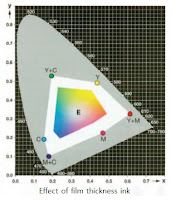The products produced by the company, in their journey, of course undergo stages as according to its life cycle, so that product selection, product definition and product designs need to be continuously updated. Therefore know how to create and develop new products successfully it is an obligation for companies that want to survive.
1. New Product Creation Opportunity
Circumstances that provide opportunities for the emergence of new products include:
1. Consumer Understanding
2. Economic Change
3. Sociological and demographic changes
4. Technological Change
5. Political/Regulatory Changes
6. Other changes such as:
a. Practice in the market
b. Professional standard
c. Supplier
d. Distributor
2. The Importance of New Products
Companies need to continuously make efforts to create new products or product renewal because to be able to balance the competition faced including substitute products as well as changes in consumer needs and desires. Even though in reality many new products fail to get it marketed but persistent efforts to introduce new products must still be done. Therefore, product selection, product definition and product design is very important to be carried out continuously so that the operations manager and
the organization must understand the risk of failure that may occur. And must accommodate many new products while the activities carried out are still carried out.
Product Development Stages
a. Ideas that can come from various sources from within the company, for example the Research section
and Development and from outside through understanding consumer behavior, competition,
technology, workers, supplies. This stage is the basis for entering the market and
usually follow the company's marketing strategy.
b. The ability of the company to realize the idea. By doing coordination of various related departments in the company concerned.
c. Consumer demand to win in competition by identifying position and product benefits that consumers want through attributes about the product.
d. Functional specifications: How can a product function? By going through identification of engineering characteristics of the product, possible comparison with the product from competitors.
e. Product specifications: How is the product made? Through physical specifications such as size,
dimensions.
f. Design review: Are the product specifications the best in meeting the requirements? consumer needs?
g. Market test: Does the product meet consumer expectations? To ensure prospects for future by selling in bulk.
h. Introduction in the market by mass-producing to be marketed.
i. Evaluation: to measure success or failure, because if you fail you can quickly
replaced by other, more profitable products.


















